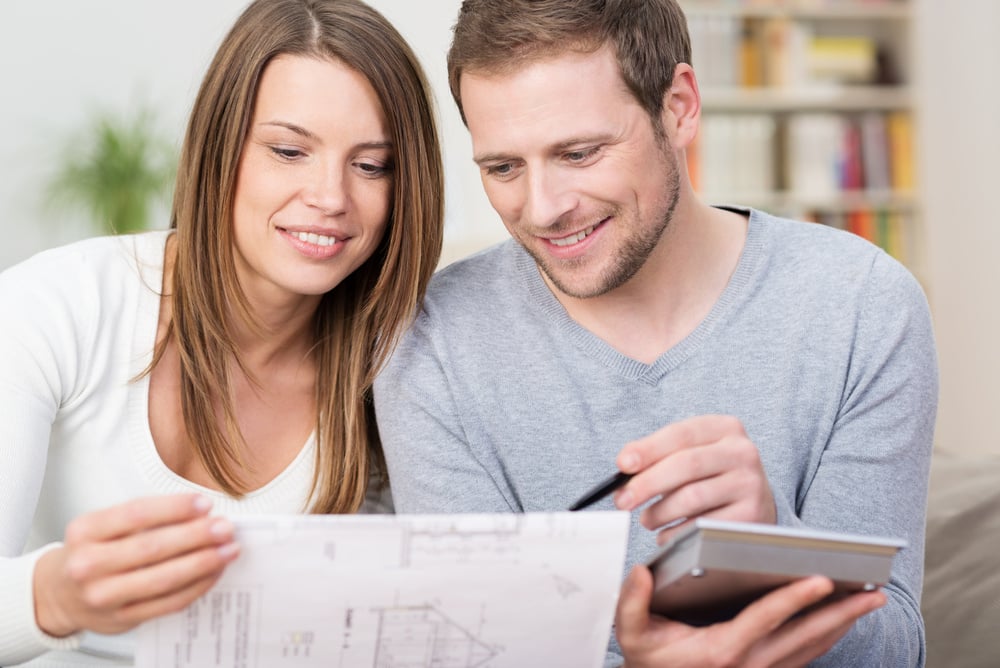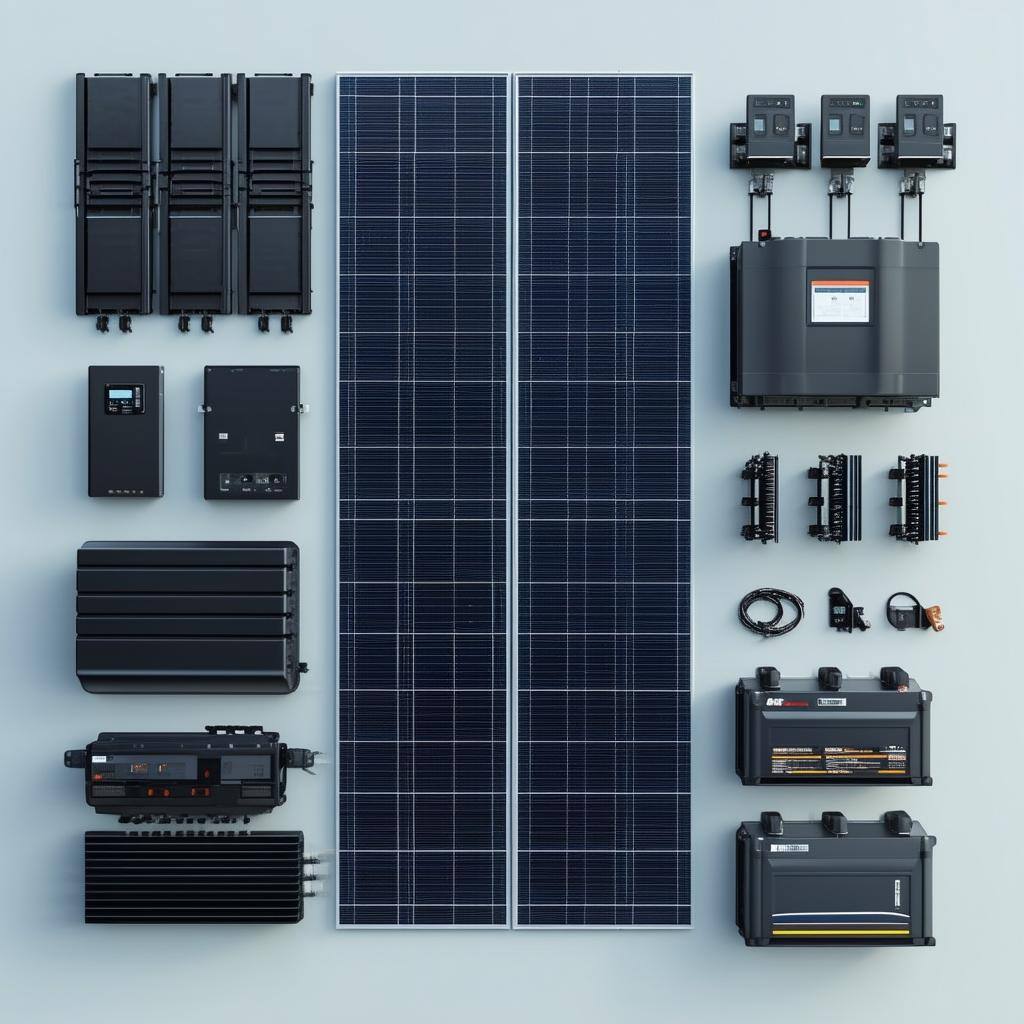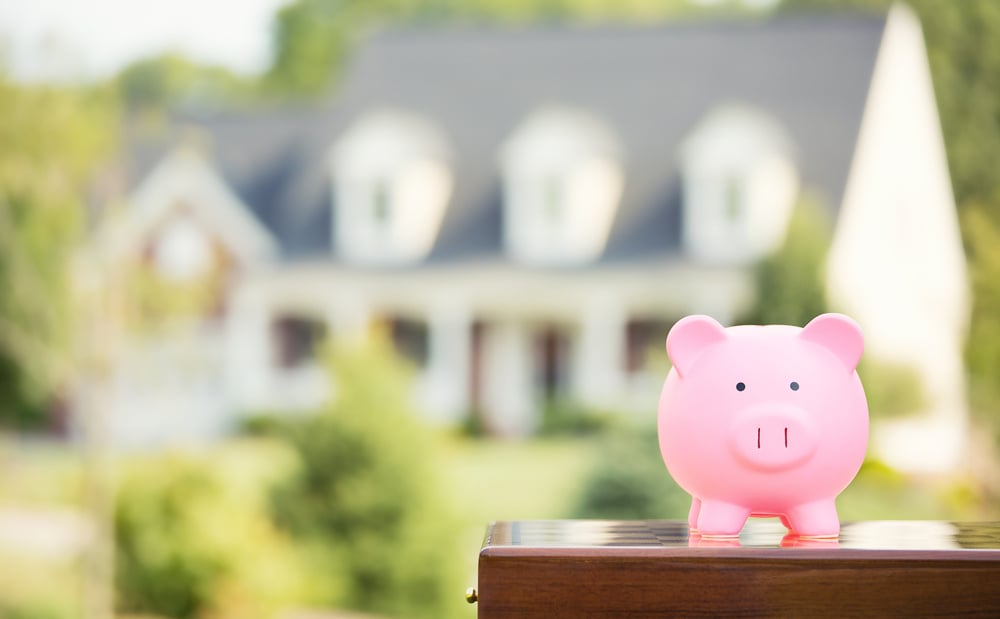Solar System Components: A Comprehensive Guide to Building Your Solar Power System
Welcome to the world of solar energy! Whether you're just exploring the possibilities or seriously considering installing a solar power system, it's...
7 min read
Peter Swenson : Oct 28, 2024 4:47:03 PM

So, you’re thinking about going solar? Great choice! Solar power is one of the best ways to save on electricity bills, reduce your carbon footprint, and increase your home’s energy independence. But let’s be real—switching to solar isn’t free. You’re here because you want to know how much it’ll cost and whether it’s worth the investment.
In this guide, we’ll walk you through the various costs involved in a solar installation, from equipment and installation fees to hidden expenses and tips for cutting costs. By the end, you’ll have a clear idea of how much you need to budget and how to set realistic expectations.
The big question people often ask is: how much does it cost to go solar? The answer depends on several factors, such as the size of your system, the quality of the equipment, installation fees, and even where you live. Solar systems are an upfront investment, but the long-term savings can be significant.
Here’s how to think about it:
Initial Costs: These are the expenses you pay upfront to get the system up and running, including the cost of panels, inverters, batteries, and installation.
Long-Term Savings: Once your system is installed, you’ll start saving on electricity costs. Depending on how much electricity you use and the cost of power in your area, those savings can really add up.
Let’s dive deeper into these initial costs to get a complete picture of what you’re looking at when you invest in solar.
Solar systems have multiple parts, and each plays a key role in how well your setup functions. The three main components are solar panels, inverters, and batteries (if you choose to include storage). Let’s break down the cost of each piece.
The solar panels are the heart of any system. These panels absorb sunlight and convert it into electricity, and they come in various types and quality levels.
Monocrystalline Panels: Known for their high efficiency and sleek look, these are generally the most expensive option, but they provide the best performance, especially in smaller spaces.
Polycrystalline Panels: These panels are less efficient than monocrystalline but more affordable. They’re a great option if you have enough roof space.
Thin-Film Panels: These are the least efficient and cheapest option, typically used for large installations where space isn’t a concern.
Average Cost: Solar panels typically cost between $0.70 and $1.50 per watt. For a standard 6-kilowatt system, expect to pay between $4,200 and $9,000 just for the panels.
Inverters convert the DC (direct current) electricity produced by the panels into AC (alternating current), which is what powers your home. There are a few types to choose from, and the one you pick can impact your system’s efficiency and durability.
String Inverters: The most affordable and commonly used type, string inverters connect all panels in a series. However, if one panel underperforms (say, due to shading), it can affect the entire system.
Microinverters: These are installed on each panel, which means that shading or damage on one panel won’t affect the others. Microinverters are more expensive, but they offer better performance and monitoring capabilities.
Power Optimizers: A middle-ground solution, power optimizers are paired with each panel to maximize output while using a central inverter.
Average Cost: Inverters cost between $1,000 and $3,000 for a standard residential system. If you choose microinverters, expect to be on the higher end of that range.
Batteries store excess energy generated during the day for use at night or during a power outage. While not essential for everyone, batteries are a valuable addition for anyone looking for energy independence.
Lithium-Ion Batteries: These are the most popular choice due to their high efficiency and long lifespan. Brands like Tesla Powerwall are a common option.
Lead-Acid Batteries: More affordable but less efficient and with a shorter lifespan. They’re typically used in off-grid systems with less frequent use.
Average Cost: Batteries range from $5,000 to $10,000 per unit. A full battery setup that can power an average home during peak hours might cost between $10,000 and $20,000 depending on capacity.
Installation is a critical part of going solar. While some homeowners consider DIY installation, a professional installation ensures that your system is safe, efficient, and up to code. Here’s what you should know about installation costs.
System Size: A larger system requires more panels, more labor, and possibly more support structures, increasing the cost.
Roof Type and Condition: If your roof is steep, complex, or needs repairs, installation costs may increase. Ground-mounted systems can also add to costs if additional infrastructure is required.
Location: Local labor rates, cost of living, and building codes can influence the installation price.
Permits and Fees: Many areas require permits for solar installations, which can add a few hundred to a few thousand dollars to your bill.
Average Cost: Professional installation typically costs between $0.80 and $2.50 per watt. For a 6-kilowatt system, installation might run between $4,800 and $15,000.
Aside from equipment and installation, there are some less obvious expenses that come with a solar setup. Let’s cover the hidden costs so you’re not caught off guard.
Most local governments require permits for solar installations to ensure everything meets safety codes. These permits vary by location but generally cost between $100 and $1,000. Inspections may also be required once the system is up and running.
One of the great things about solar panels is that they’re generally low-maintenance. However, they’re not entirely maintenance-free.
Cleaning: Dust and debris can accumulate on your panels over time, affecting efficiency. Many homeowners clean their panels once or twice a year, costing around $150 to $300 each time.
Inverter Replacement: Inverters usually last between 10 and 15 years, so you might need to replace it once over the life of your system. Expect to pay between $1,000 and $3,000 for a new inverter.
Battery Maintenance: If you have a battery, it may need occasional upkeep, especially if you’re using lead-acid batteries. Lithium-ion batteries require less maintenance but still need to be checked every few years.
If you’re planning to stay in your home for a long time, you may want to upgrade your system over the years. Here are a few examples of potential upgrades and their costs:
Battery Add-On: If you initially install a grid-tied system without batteries, you can add them later, but it will cost you an additional $5,000 to $10,000 per battery.
Monitoring Systems: While some inverters include monitoring features, you may want to install a separate monitoring system to track your energy production in real-time. Expect to pay $300 to $700 for this.
Panel Replacement or Expansion: If you decide to expand your system or replace old panels, each new panel may cost between $200 and $500.
The costs of going solar can seem overwhelming, but there are several strategies to make it more affordable. Let’s go over some popular ways to reduce your overall expenses.
One of the biggest cost-saving opportunities for solar installations in the U.S. is the Federal Solar Tax Credit. This incentive allows you to deduct a percentage of your installation costs from your federal taxes, significantly lowering the initial expense.
Federal Tax Credit: As of now, the federal tax credit covers 30% of your total system cost. So, if your system costs $20,000, you can claim a $6,000 credit on your taxes.
State and Local Incentives: Many states offer additional rebates or incentives, ranging from $500 to $5,000. Check with your state’s energy office or utility company to find out what’s available in your area.
If paying the full cost upfront isn’t feasible, several financing options can help make solar more accessible.
Solar Loans: Similar to a home improvement loan, solar loans allow you to spread the cost over several years. Many banks and solar companies offer low-interest solar loans, so you can start saving on your energy bills right away.
Solar Leases: With a solar lease, you pay a fixed monthly fee to “rent” the solar panels. While you won’t own the system, leasing often requires little to no money down and can still lower your utility bills.
Power Purchase Agreements (PPAs): In a PPA, you only pay for the energy your system produces, at a rate lower than your regular utility rate. PPAs offer similar benefits to a lease but may have longer terms and fewer customization options.
For those who want to reduce costs even further, bulk purchasing or community solar options are great choices.
Bulk Purchasing: Some local programs organize solar co-ops, allowing multiple homeowners to purchase solar systems together. By buying in bulk, everyone gets a lower price. Check with local solar organizations to see if any bulk purchase programs are available in your area.
Community Solar: If installing panels on your property isn’t an option, community solar programs allow you to “subscribe” to a larger solar project. You receive credit for the energy produced by your portion, which lowers your electricity bill.
When you invest in solar, you’re looking at both upfront costs and long-term benefits. One way to measure the return on your investment is through the payback period. The payback period is how long it will take for your savings to equal the initial cost of the system.
Determine the Total Cost: Add up all costs, including equipment, installation, permits, and any other fees.
Calculate Annual Savings: Look at your electricity bills and determine how much you’ll save each year by switching to solar. Be sure to consider potential utility rate increases.
Divide: Divide the total cost by the annual savings to get your payback period in years.
Example: If your solar system costs $15,000 and saves you $1,500 annually, your payback period would be 10 years.
For most homeowners, the payback period falls between 7 and 12 years. After that, it’s all savings. Given that solar panels often last 25 to 30 years, you could be looking at 10 to 20 years of essentially free electricity once your system is paid off.
Going solar is a big decision, but understanding the costs involved can make the process smoother and set you up for a successful transition to clean energy. Here’s a quick recap of what you need to consider when budgeting for solar:
Initial Costs: Solar systems come with upfront costs for panels, inverters, batteries (if needed), and installation. Expect to pay between $15,000 and $30,000 for a typical residential system.
Hidden Expenses: Don’t forget about permitting, maintenance, and potential upgrades down the line.
Ways to Save: Take advantage of incentives, financing options, and consider bulk purchasing or community solar for additional savings.
Long-Term Payoff: With a typical payback period of 7 to 12 years, solar energy can provide decades of savings on electricity bills.
Making the switch to solar can be one of the best investments for your wallet and the planet. Just be sure to budget carefully, take advantage of available savings, and set realistic expectations for your investment. Soon, you’ll be enjoying the benefits of solar energy, both in your bank account and your home’s reduced environmental impact. Happy solar shopping!

Welcome to the world of solar energy! Whether you're just exploring the possibilities or seriously considering installing a solar power system, it's...

If you’re considering going solar, you’ve probably heard that it’s a great way to save money and help the environment. But here’s the catch: the...

So you’re thinking about going solar—great choice! Solar energy is a fantastic way to lower your bills, reduce your carbon footprint, and gain some...